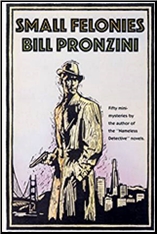LET’S GO NATIVE. Paramount, 1930. Jeanette MacDonald, Jack Oakie, “Skeets†Gallagher, Kay Francis, James Hall and William Austin. Written by Percy Heath and George Marion Jr. Directed by Leo McCarey.
A silly thing, but outrageously enjoyable. Writers Heath and Marion start with a “putting on a show” story: Jeanette McDonald is a Costume Designer in dire straits whose show is about to launch… if she can just make ends meet till then. That’s adequate, but Director McCarey is more interested in using slap-shtick from his old silent days, while Eugene Pallette, charged with repossessing Jeanette’s belongings, drops and breaks whatever he touches, like a one-man Laurel & Hardy routine.
Suddenly a title card informs us that the star of the show couldn’t make it, so Jeannette stepped in and is now the star! 10 minutes of show tunes ensue, including one with dancing bears that ends with the warbling lovers encased in snow. McCarey does what he can with a stationary camera, but basically this is just photographed dance routines, in the style of the Marx Brothers’ Coconuts (1929.) Still, those guys dancing in bear suits….
About this time Jack Oakie shows up as a cab driver named Voltaire McGinnis, and the whole show sets off for South America(!) whereupon Native turns into a shipboard romance, with Jeanette up against Kay Francis (also the vamp in Coconuts) for the affections of bland leading man James Hall. With time out for some more L&H routines and a dance number of course.
Then there’s a shipwreck and the players are stranded on a tropical island ruled by Skeets Gallagher, a band-leader marooned there years ago, who taught the native girls (there are no native men) to play swing music. So they dress up in Jeanette’s costumes and put on a show till the volcano erupts…. and NO, Jeanette does NOT wake up from a dream.
Jack Oakie gets most of the comedy time, but the big laugh-getter is William Austin, a British comic I never heard of, who does physical & verbal comedy equally well, mixed with an off-hand manner that downplays his expertise and conversely shows it off. Austin had a mostly bit-part career but is remembered thusly in IMDB:
So William Austin paved the way for Michael Gough, Alan Napier, Michael Caine and Jeremy Irons. In these posts I strive to be Educational as well as Entertaining.
